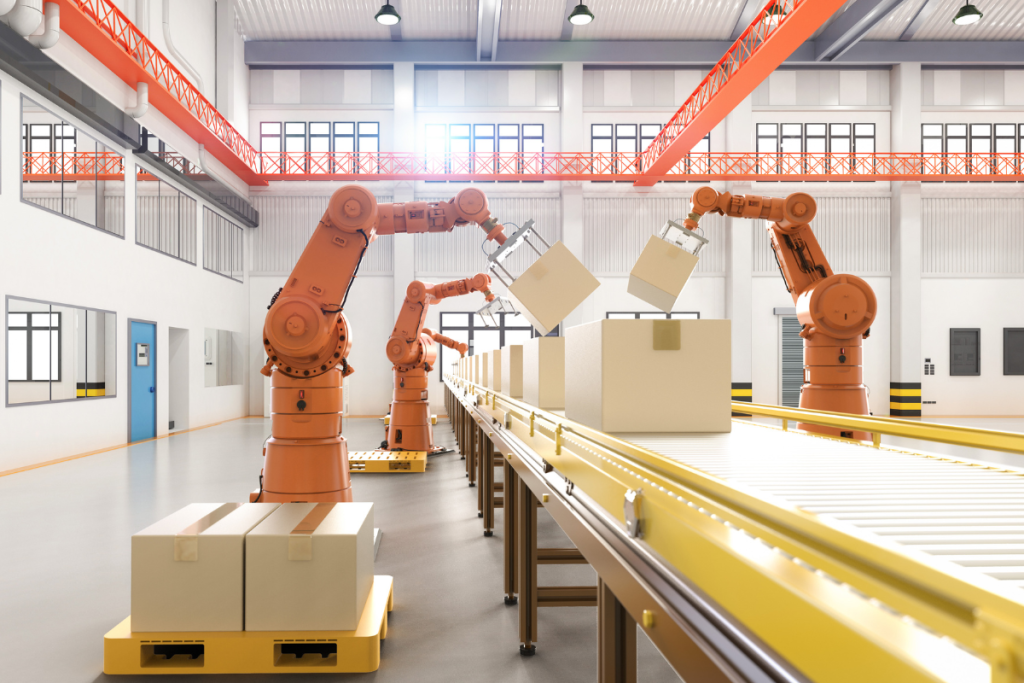North American robot orders remained flat in volume but rose in value in the first quarter, reflecting a shift toward higher-value systems and more selective automation strategies. New data from the Association for Advancing Automation (A3) reveals that the North American companies ordered 9,064 robots worth $580.7 million in Q1 2025, a flat 0.4% year-on-year increase in units but a 15% rise in value, signaling continued demand for higher-value systems.
Automotive OEMs Drive the Quarter
The automotive sector drove growth. Original equipment manufacturers ordered 3,668 robots worth $263 million, up 42% in units and 78% in value compared to Q1 2024. This jump reflects a pivot toward more advanced automation platforms, likely tied to new production lines, EV transitions, or reshoring-linked upgrades.
For supply chain leaders, the trend highlights that automation investments are no longer just about unit count, they’re increasingly about strategic fit. Leaders should reevaluate whether their automation ROI models account for value beyond labor savings, such as throughput stability, rework reduction, and EV-related process complexity.
In contrast, automotive component suppliers saw a 29% drop in unit orders and a 12% decrease in value. This imbalance reflects a familiar reality—OEMs often lead automation cycles, while upstream tiers remain more cautious amid uncertain demand signals. Yet for component makers, this is also a moment to stress-test resilience: if Tier 1 and Tier 2 suppliers delay upgrades too long, they risk falling out of sync with OEM production standards or schedule expectations.
Among non-automotive sectors, results were mixed. Plastics and rubber stood out, with a 12% rise in units and a 33% increase in order value. Other sectors, including metals, semiconductors, and consumer goods, declined year-over-year. These shifts suggest that outside of automotive, manufacturers are targeting automation tactically, using it to address narrow labor or efficiency constraints rather than committing to full-line overhauls.
Cobots Gain Ground in Targeted Environments
Collaborative robots (cobots), while a smaller portion of the total market, continue to outpace broader trends in adoption where flexible, human-centric automation is needed. In Q1 2025, 1,052 cobots were ordered, valued at $39.2 million. They represented 11.6% of all robots ordered and 6.8% of total automation spend.
Cobots made up more than 20% of robot orders in high-flex industries. Life sciences/pharma/biomed led with 127 units worth $7.1 million, followed by food and consumer goods with 114 units totaling $4.5 million. These sectors typically demand safe collaboration, quick changeovers, and adaptable layouts—conditions where cobots are particularly well suited.
Their growing presence also reflects a strategic automation shift: supplementing labor without overhauling facilities, especially in regulated or labor-constrained environments.
Investment Shifts from Scale to Fit
The data points to a more disciplined approach to automation. Capital is moving toward systems that deliver resilience, reduce variability, and align with long-term strategic shifts like EV production and nearshoring.
For supply chain leaders, the shift highlights the importance of evaluating automation based on operational relevance rather than volume alone. As workforce challenges and compliance pressures persist, automation decisions are increasingly defined by operational context, not just technological capability.




